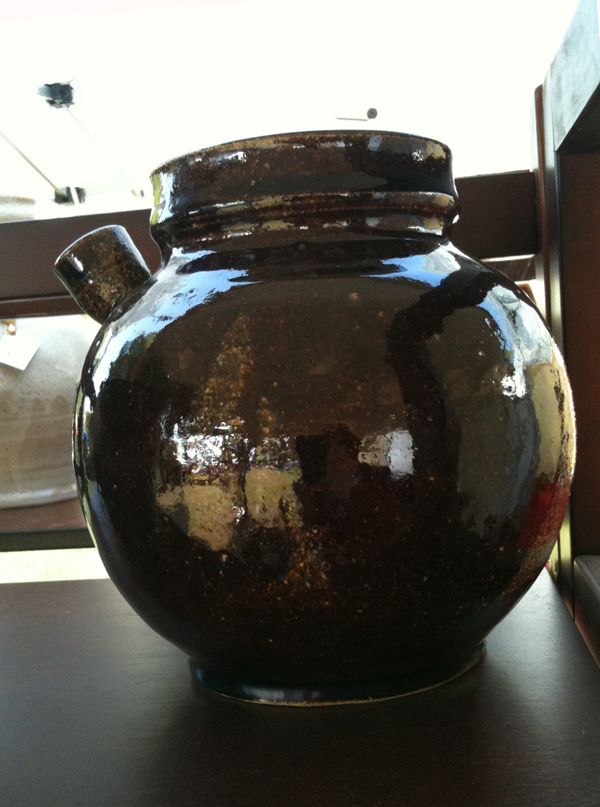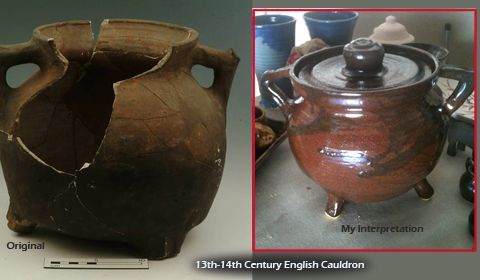Cooking with Fire
Alton Brown has used Earthenware pots in a number of his episodes. The ones I've seen have been mostly baking, but to let my readers know that ceramics were the first "dutch oven" pretty much. Ceramics were used in ancient Rome and Greece, as well as in other ancient cultures around the world. They were used for the usual things one would cook in a stainless steel pot (i.e. stews, soups, sauces, vegetables, meats, rice, etc). You can even bake bread in clay (there is a roman/greek clay cloche I found the documentation for), serve wine, prepare your items (mortars and kitchen items)... well, I think you get the picture. The thing with Alton was he usually uses flower pots to cook in. It's nice to see the pots I've made being used for what I intended them for, and them being enjoyed.
Anywho, the way to use clay cookware is actually fairly simple. To avoid thermal shock, you need to make sure you evenly warm the clay vessel and slowly heat them. No open flames at all.
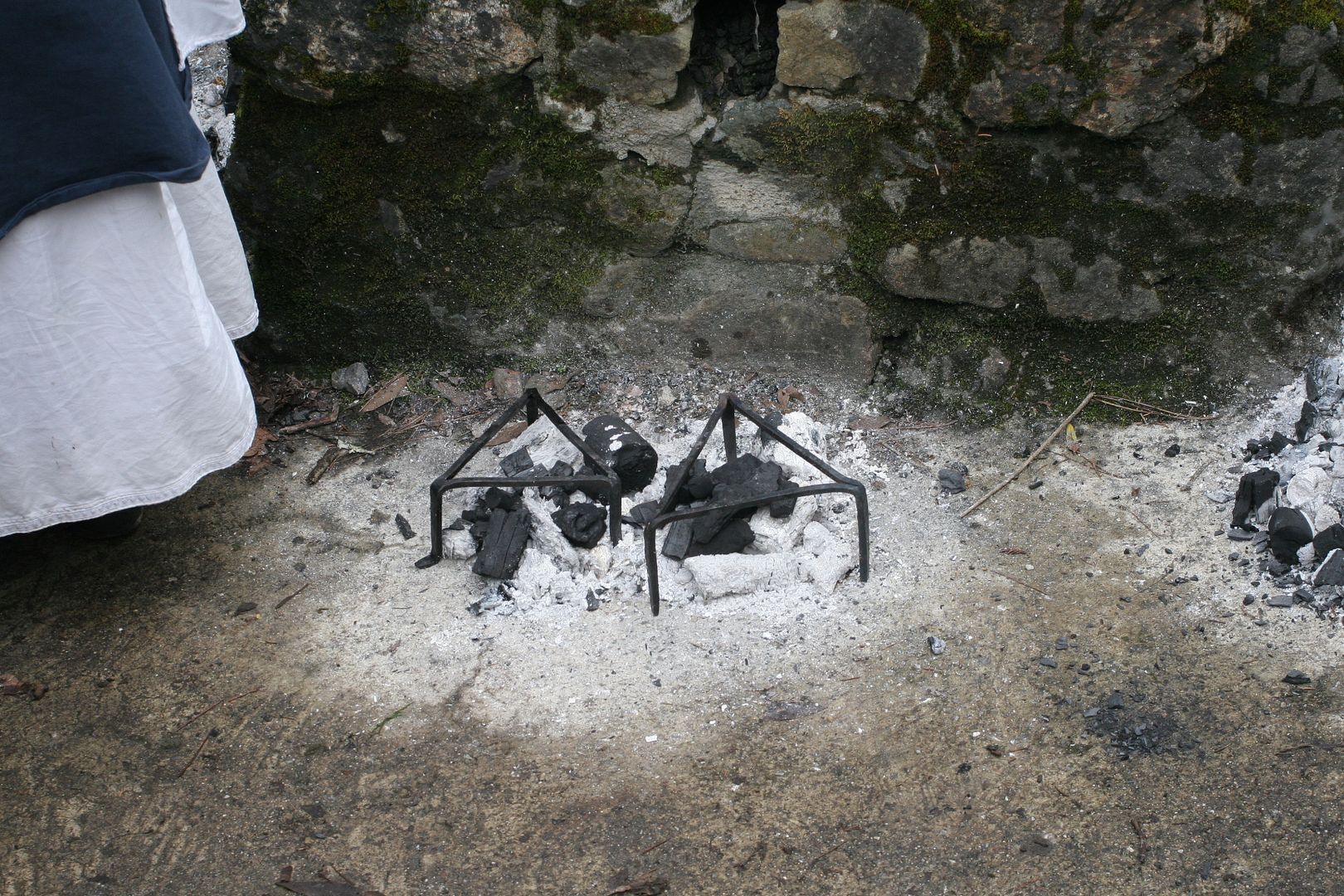
Usually they start with coals. If a pot doesn't have feet (it's a sauce pan instead of a pipkin...) then a trivet is put down on a sturdy fire proof area. Someplace dry and away from a lot of wind is an ideal spot. If your pot as feet, don't worry about the trivet.
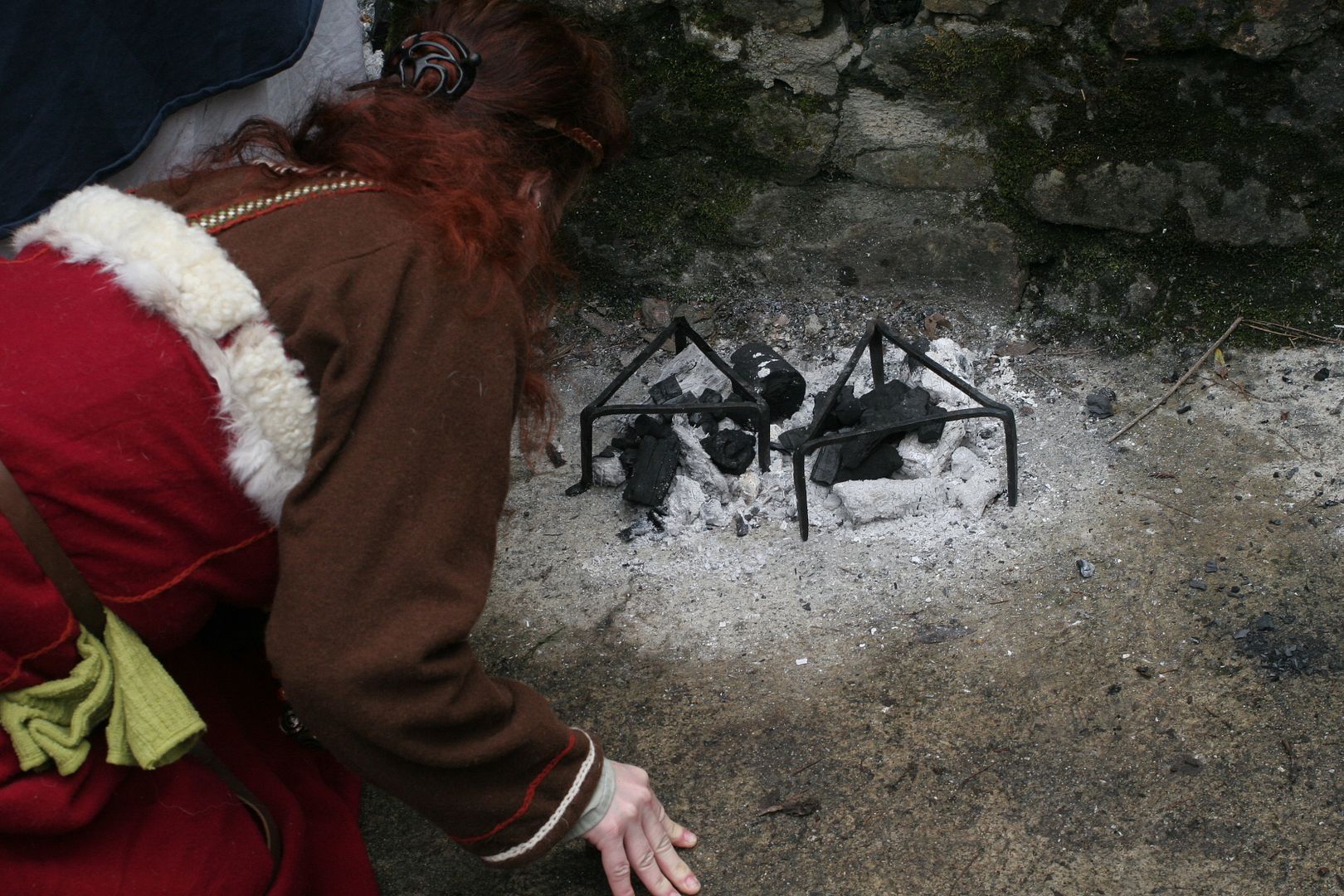
This woman is heating up the coals and trying to get some air into them. Bellows would be fairly helpful at this point, but not needed when skirts and lungs are had. Just be careful not to set yourself on fire.
I've always told to slowly warm the pots by keeping the pot next to the coals as you are building the fire (a few feet) and as the coals settle into gray, hot useable goals, slowly move the pot closer and closer to the pile. Even heat to the pot. You don't want to drop a cold pot into a hot fire because the pot may crack due to thermal shock (think of a glass of ice and pouring boiling water into it and the usual ramifications of that).
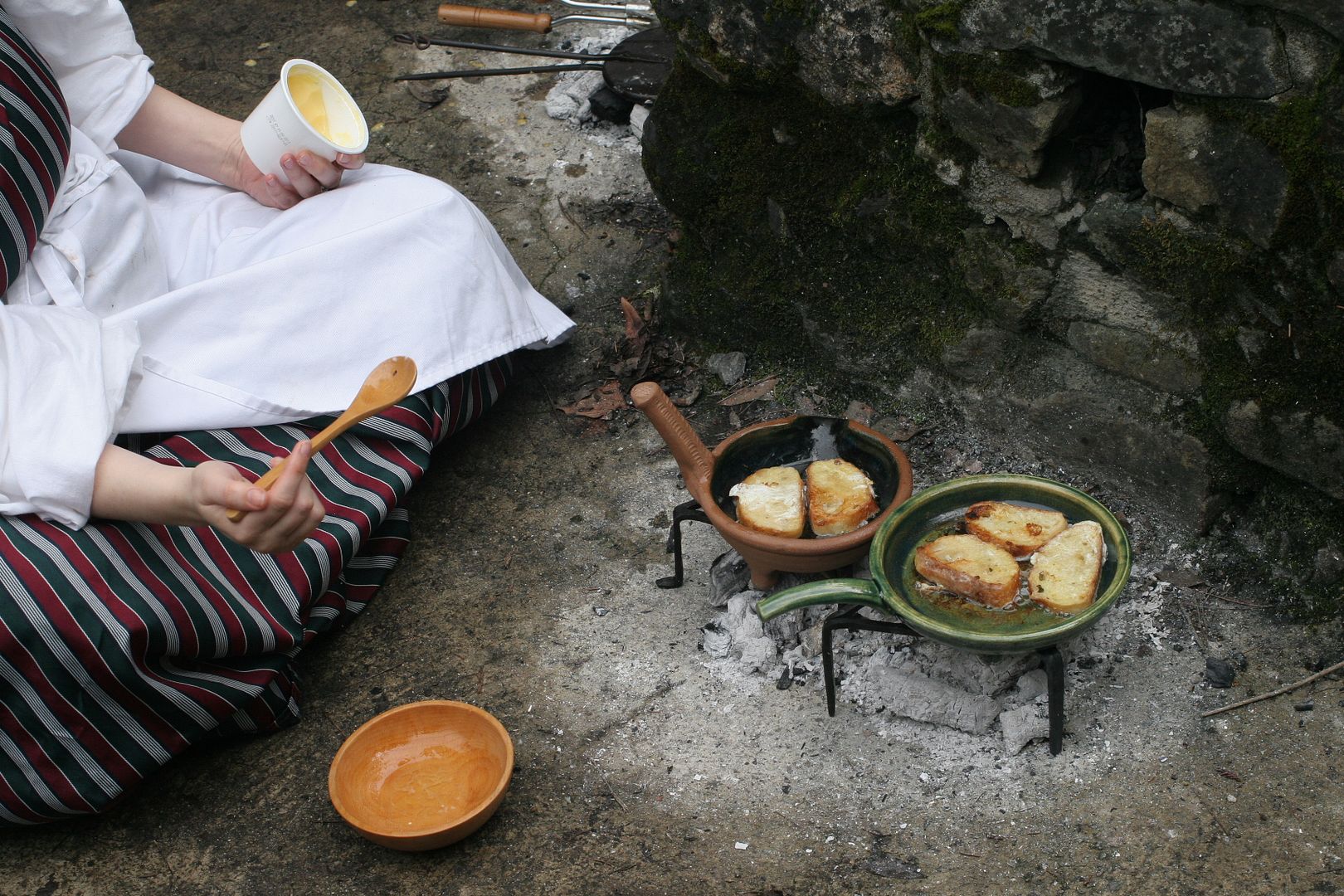
Pans of french toast added. Cooking commences. More coals are added as cooking is done.
Here are more examples of pots and cooking with fire.
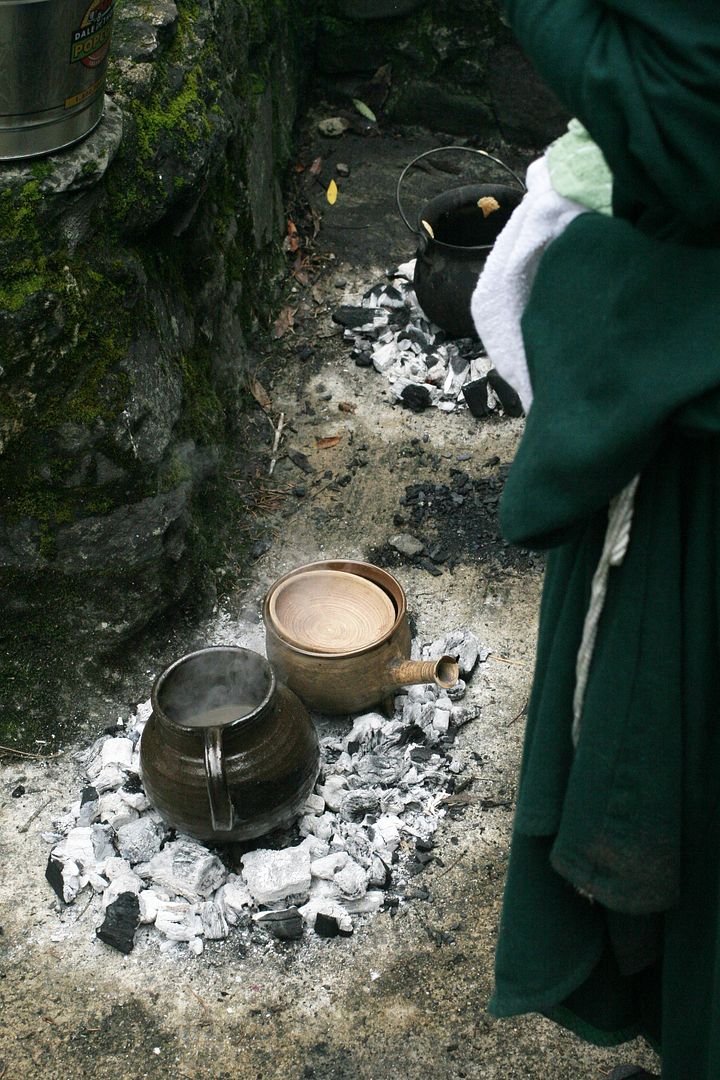
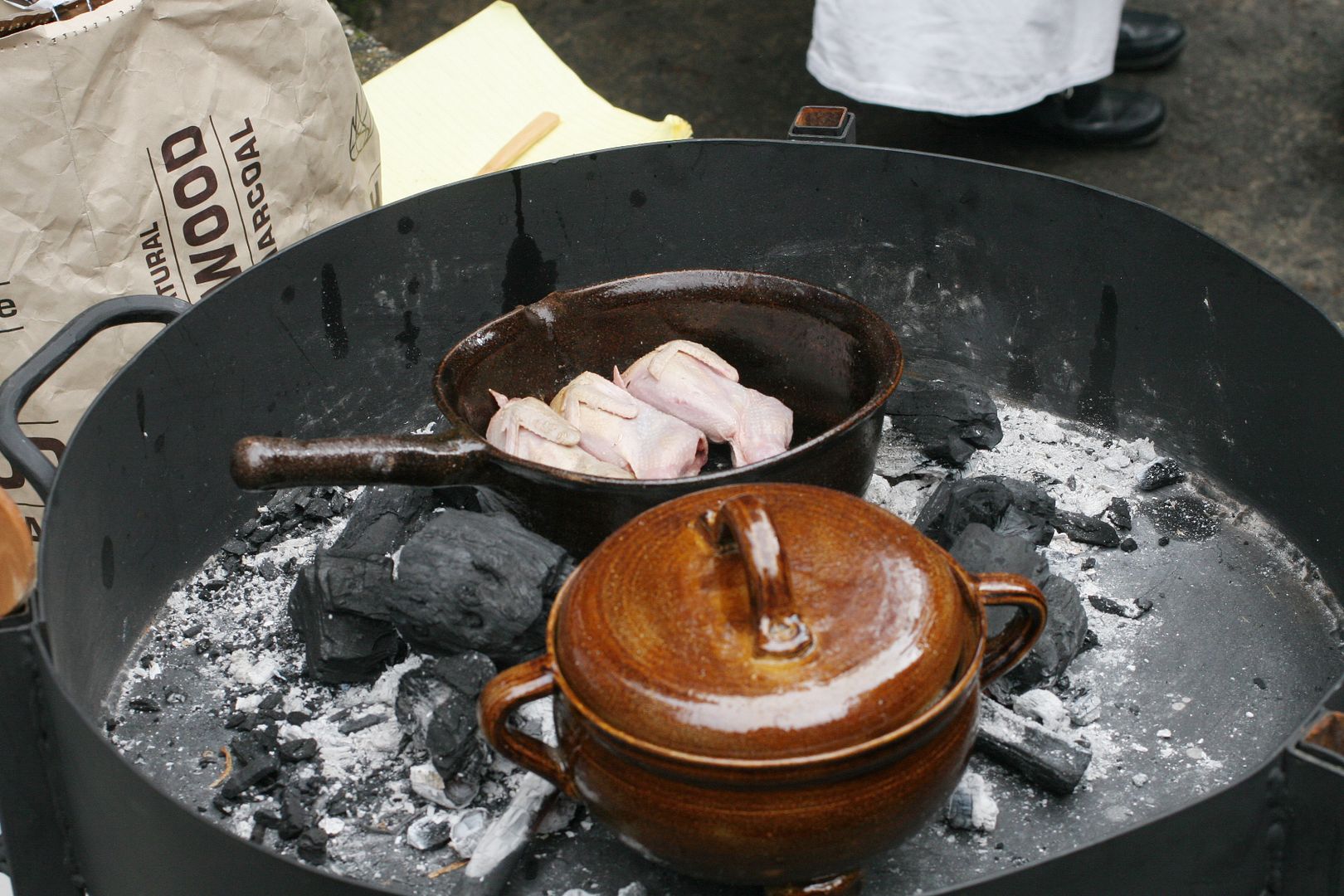
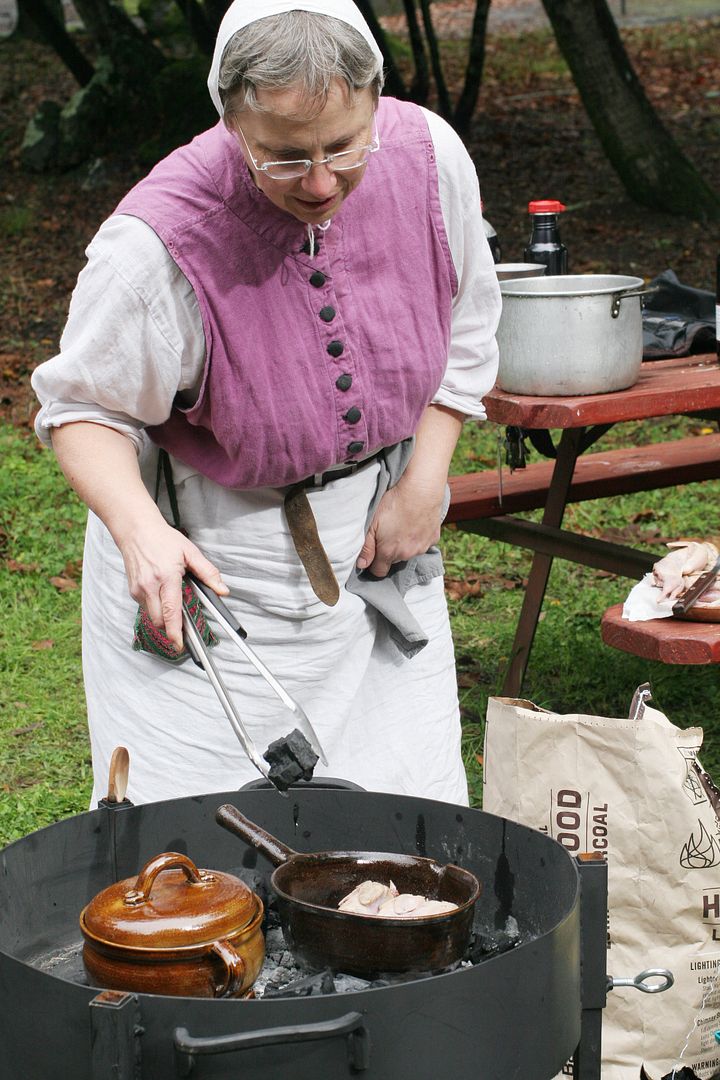
Differences in handles... the hallow handles you would use a long stick in order to help pull it out of the fire. Some of the ladies would also use a mitt in order to help steady the pot and the stick to remove the cookware from the coals.
Items that were being cooked: french toast, custard, apple fritters and a game hen of some sort in wine sauce. There were also pancakes/prizelles I believe being made. From what I ate, it was all very yummy.
Labels: cookpot, cookware, historical cooking, outdoor cooking, siege cooking

